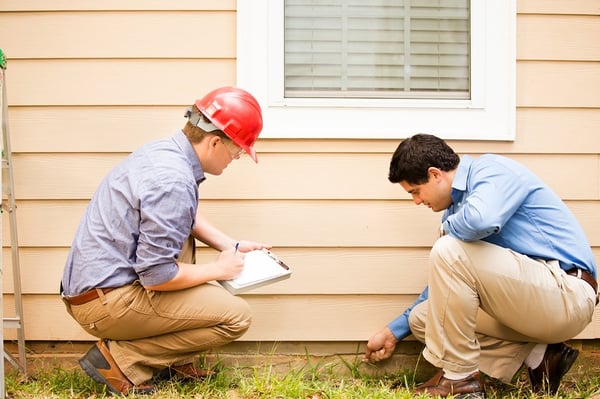As people become more and more health-conscious, they want to be aware of anything that could be harming them.
People want to be able to eliminate anything that can cause harm or disease so they can live healthy, full lives.
So, when they hear about something colorless, odorless, and tasteless, that can potentially cause severe health problems, they need to know everything about it.
That's just what radon is, and it can cause severe health issues if not dealt with properly.
But, can exposure to radon cause leukemia?
We'll take a look at that and more in the article below.
Table of Contents
- What Is Radon?
- How Are You Exposed To Radon?
- Does Radon Cause Leukemia?
- Radon and Lung Cancer
- How To Know if You Have Elevated Levels of Radon
- Get Your Home Tested Today
What Is Radon?
Radon is a colorless, odorless, radioactive gas.
It forms naturally when radioactive elements found in different amounts in soil and rock throughout the world, like uranium, break down.
Radon gas in soil and rock can escape into the air and into underground and surface water.
Radon can be found outside and inside.
When it's found in the air outside, or in rivers or lakes, it's usually found at very low levels.
It can be found at much higher levels in the air trapped inside of houses and other buildings.
When radon breaks down, it can attach to dust and other particles, and can be breathed into the lungs.
As radon and radon progeny in the air break down, they give off radiation that can damage the DNA inside the body's cells.
 How Are You Exposed To Radon?
How Are You Exposed To Radon?
Most people are exposed to radon from being inside their home, office, school, or any other type of building.
The level of radon that you might find in your home will depend on the characteristic of the rock and soil in your area and how your home interacts with it.
As a result, radon levels vary greatly within the different areas of the United States, and they can even be significantly different inside neighborhoods.
No one is safe; elevated levels of radon have been found in every state.
Radon gas given off by soil or rock can enter buildings through cracks in floors or walls, construction joints, gaps in foundations, or around pipes, wires, or pumps.
You'll find the highest levels of radon in the lowest level of the home, like a basement or crawl space.
According to the EPA, the average indoor radon level is about 1.3 pCi/L.
If your home has a radon level of 4 pCi/L, you need to take immediate action.
The EPA also estimates that 1 out of every 15 homes in the United States has elevated radon levels.
Outdoor radon levels are usually not elevated to a point where you would need to worry.
Radon levels outside average about 0.4 pCi/L.
As stated above outside environmental variables may affect radon levels. For more information read our blog post: "What You Need to Know About Radon in the Winter."
Does Radon Cause Leukemia?
Now that we know what radon is, and how we're exposed to it, are we going to get leukemia if we're exposed to elevated levels?
Some studies suggest that radon exposure might be linked to leukemia, but the evidence is mixed and not very strong.
Because radon is absorbed mainly by inhaling, and because the radiation it gives off travels very short distances, it's unlikely that radon would affect other tissues in the body.
The evidence remains inconclusive.
Radon and Lung Cancer
One form of cancer we are sure can be caused by radon exposure is lung cancer.
Radon gas in the air breaks down into tiny radioactive elements that can lodge themselves in your lungs, where they can give off radiation.
This radiation can cause damage to your lungs that can eventually lead to lung cancer.
It's well known the cigarette smoking is the most common cause of lung cancer, but radon is right behind smoking as the second leading cause.
It's estimated that around 21,000 people die every year due to lung cancer caused by radon exposure.
Being exposed to radon and smoking cigarettes will significantly increase your risk of lung cancer.
Most radon-related lung cancers develop in smokers.
However, radon has also caused a significant number of lung cancer deaths among non-smokers each year as well.
How To Know If You Have Elevated Levels Of Radon
Testing your home is the only way to know for sure if it has elevated levels of radon.
Homes next door to each other can have different radon levels, so don't assume that because your neighbors home tested safe that yours will too.
Rain, snow, barometric pressure, and several other factors can influence that radon levels in your home, causing them to vary from month to month or even day-to-day.
That's why both short and long-term tests are available.
A short-term test will measure the levels of radon in your home for 2 to 90 days, depending on the device.
Long-term tests last for 90 days and up.
Long-term tests are much better indicators of whether or not your home has elevated levels of radon because of how much they can fluctuate over time.
Either test will be easy to use, and both are relatively inexpensive.

Get Your Home Tested Today
No matter what type of cancer radon might cause, you have the right to know if you and your family are being exposed to it in your home.
You can purchase one of the tests we mentioned above, or you could leave it in the hands of the professionals.
Radon poisoning should not be underestimated, so you should allow people who are trained to handle high levels of radon to test your home.
The experienced team at Radon Eliminator will test your home for elevated levels of radon.
Then if necessary, they will install a radon mitigation system to get the levels back to normal.
Click the button below to get started today.





